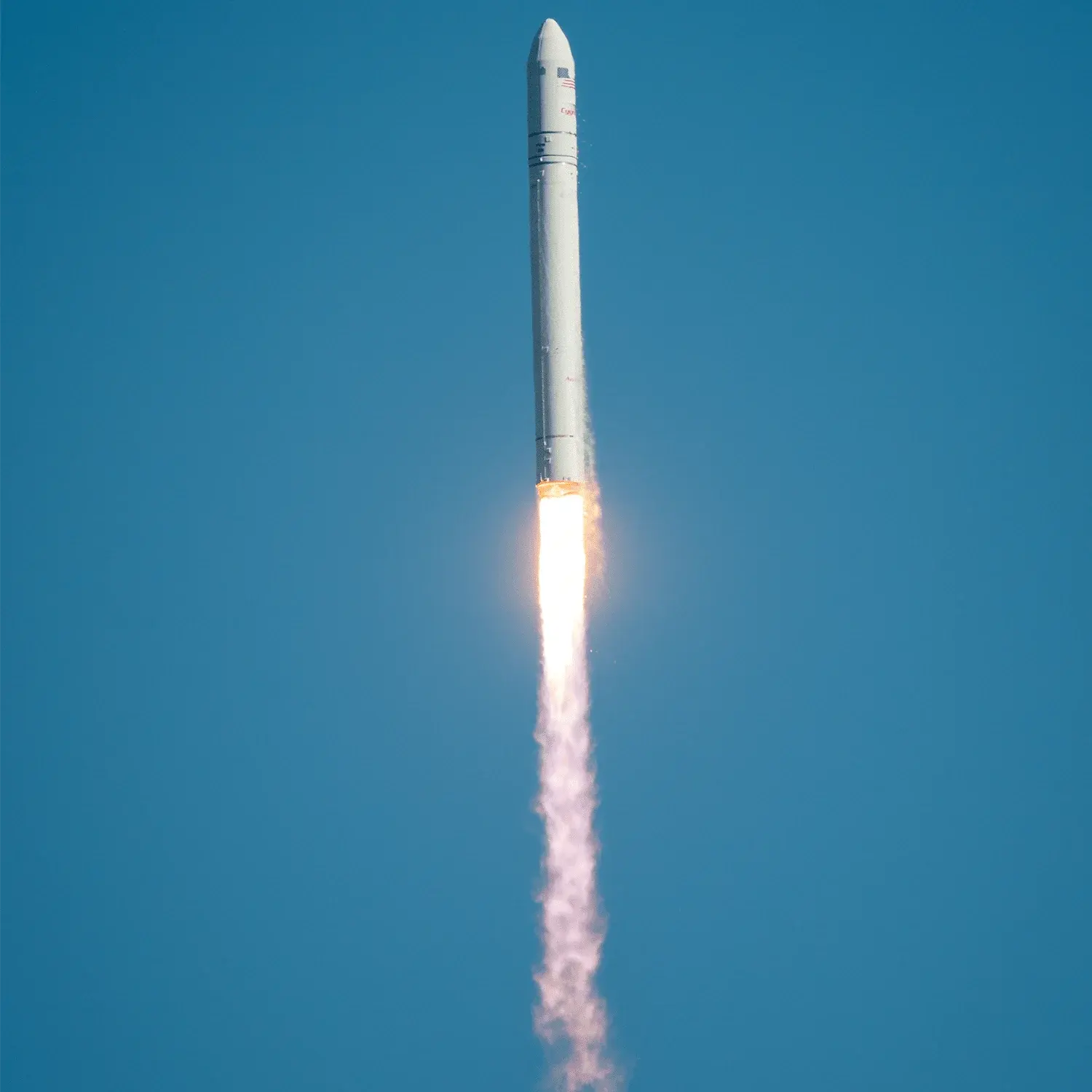Antares A-ONE (CMS & Others)
Launch Success
Liftoff Time (GMT)
21:00:00
Sunday April 21, 2013
Watch Replay
Official Livestream
Mission Details
Read Article
Launch Notes
The first launch of Antares.
Cygnus Mass Simulator
The primary payload was the Cygnus Mass Simulator (CMS). It had a height of 199.25 inches (5,061 mm), a diameter of 114 inches (2,900 mm), and a mass of 8,400 pounds (3,800 kg). It was equipped with 22 accelerometers, 2 microphones, 12 digital thermometers, 24 thermocouples, and 12 strain gages. Northrop Grumman (formerly Orbital ATK) and NASA jointly developed a new space transportation system to provide commercial cargo resupply services to the International Space Station. The Cygnus cargo ship consists of two parts, a service module built in the USA based on the GEOStar platform, and a pressurized module, manufactured in France and Italy by Thales Alenia. The cargo is sent into orbit by a launcher specially developed for this purpose. Antares has a first stage based on Energiya lateral blocks, made in Ukraine by Yuzhnoye. It was initially powered by two NK-33s, built in the 1960s for the Soviet N1 lunar launcher, before being replaced by RD-181s, derived from the RD-170s installed on Energiya and Zenit. The second stage, a Castor-30, is made in the USA, by Northrop Grumman.
Low Earth Orbit
1 Payload
3,800 kilograms
PhoneSats
PhoneSats are 1U CubeSats built by NASA's Ames Research Center. They were named Alexander, Graham, and Bell, after the inventor of the telephone. The purpose of these three satellites was to demonstrate the use of smartphones as avionics in CubeSats.
Low Earth Orbit
3 Payloads
3 kilograms
Dove 1
The Dove-1 mission is a technology demonstration nanosatellite for Cosmogia Inc., later renamed Planet Labs, for remote sensing purposes based on the triple CubeSat form factor. The design mass is 5.8 kg. Basic physical dimensions are 100 mm × 100 mm × 340 mm, with four 100 mm × 300 mm deployable solar arrays. The Dove-2 superstructure is custom-built by the Cosmogia team. The load-bearing structure is basically comprised of three 100 mm × 100 mm skeleton plates, with L rails along each 300 mm corner edge. Four 100 mm × 300 mm solar arrays are spring-loaded to deploy from the camera end of the satellite, in a "dart" configuration. Power storage is provided by Lithium-Ion cells. The batteries were recharged by solar cells mounted on the body of the satellite and on the four deployable solar panels. Dove-1 attitude is approximately determined using the magnetic field vector from the onboard magnetometers. Dove-1’s attitude will be controlled by a B-dot controller, comprised of 3 aircore coil magnetorquers, and reaction wheels. The communication subsystem consists of an S-band radio for two-way communication, an X-band radio for downlink, and an Iridium modem for telemetry and command. The telescope has a 90 mm aperture and a high-resolution camera.
Low Earth Orbit
1 Payload
6 kilograms
Rocket


Agency
NorthropPrice
$80.00 million
Rocket
Diameter: 3.9m
Height: 40.5m
Liftoff Thrust
3,265 Kilonewtons
Fairing
Diameter: 3.94m
Height: 4.87m
Stages
2
Launch Site
Stats
Antares
1st
Mission
1st
Mission of 2013
2013
17th
Orbital launch attempt